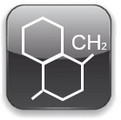EVA
Rubbers > Group M

EVA ethylene and vinyl acetate - ethylene vinyl acetate copolymer | ||||||||
Ethylene-vinyl acetate or ethylene vinyl acetate is an elastomeric polymer that produces rubber-like materials that stand out for their softness and flexibility. The material has a tenacity at low temperature, waterproof properties, resistance to UV radiation and resistance to breakage by voltage suitable for electrical applications. Copolymers obtained from the polymerization of ethylene and vinyl acetate. The different proportions of the two comonomers affect all the final yields of the plastic material which, in any case, are quite similar to those of the LDPE. Together with the MFR, the content of vinyl acetate VA is one of the most important characteristics in the EVA copolymers, since it is related to the fraction of crystalline material present in the product. In particular, as the comonomer content increases, the crystallinity decreases, which affects numerous properties of the EVA copolymers. An increase in the content of vinyl acetate VA increases the density, transparency and flexibility of the material, while reducing its melting point and hardness. | ||||||||
| Properties EVA | ||||||||
|  | |||||||
Symbols | Formula | |||||||
| ||||||||
Properties EVA | ||||||||
EVA is a semicrystalline material, (thermoplastic elastomers), whose characteristics derive mainly from the comonomer of vinyl acetate. This comonomer prevents the crystallization of the polymer chain and thus reduces the crystallinity of the material; this means that EVA, in comparison with LDPE, becomes more flexible and transparent as the amount of vinyl acetate contained increases. As the strength of the material decreases, its melting range is also reduced: the EVA melting temperature is therefore lower than that of the LDPE. Vinyl comonomer acetate is also responsible for the characteristic odor of EVA, which copolymers vaguely resemble dell'aceto. The EVA due to its polar character, which absorb small amounts of moisture. The water absorption increases with the increase of VA copolymers. They are permeable to gases and vapor. The permeability is inversely proportional to the fraction of crystalline material in olimer. EVA copolymers with a vinyl acetate content of 10 to 30% have characteristics similar to elastomers and plasticized PVC with a content of 30 to 40% plasticizer. The Eva compared to PVC has a better resistance to low temperatures without migration of plasticizer so that a permanent elasticity, a greater resistance to bending and better resistance to chemicals, better electrical insulation properties, unlike the Gas barrier properties are lower such as resistance to light and abrasion. Compared with the EVA elastomer copolymers have a better resistance to ozone (depending on the type of elastomer) is working as the thermoplastic is not vulcanizing necessary against having a lower high temperature resistance when subjected to stresses, and less elasticity. |  | |||||||
Products range EVA | ||||||||
We have at your disposal the widest range of EVA grades, with different hardness and stabilization and acetate content. |  | |||||||
| Physica and mechanical properties EVA | ||||||||
The properties of EVA copolymers are mainly determined by the vinyl acetate content and the degree of fluidity. An increase in VA content increases the density, transparency and flexibility of the material, while reducing the melting point and hardness . The ethylene-vinyl acetate copolymer (EVA) is a very elastic material that can be sintered to form a porous material similar to rubber, but with excellent strength. It is three times more flexible than low density polyethylene (LDPE), showing a tensile elongation of 750% with a maximum melting temperature of 96 ° C. |  | |||||||
| Thermal properties EVA | ||||||||
The melting point of the EVA decreases as the VA content increases. therefore the temperatures of use of copolymers are lower compared to the corresponding homopolymer (LDPE). The maximum value for the temperature of use of an artifact is less than the temperature softening Vicat. Temperatures as for all thermoplastic polymers, depend on the duration and level of mechanical stresses to which the artifacts are subject when exposed to heat. As the temperature increases, the conductivity temperature decreases until it reaches a plateau near the melting point. Flexible (gummy), transparent, good flexibility at low temperature (-70 ° C). During exposure to water and / or UV radiation EVA will decompose to produce acetic acid by lowering the pH and generally increasing the surface corrosion rates. | ||||||||
| Electrical properties EVA | ||||||||
The introduction of a polar comonomer inside polyethylene chains affects the electrical properties of the final polymer: the coefficient of dielectric loss and relative dielectric constant of EVA copolymers depend on the VA content. EVA copolymers, despite being characterized by insulating properties inferior to homopolymer (LDPE), find application in the cable industry thanks to its good resistance to stress corrosion, easy crosslinking and good flexibility. In addition, the high capacity of EVA copolymers to incorporate fillers, such as carbon black, make them very used for the manufacture of semiconductor compounds. |  | |||||||
| Chemical properties EVA | ||||||||
| Is vinyl acetate toxic? Ethylene vinyl acetate (EVA) is not dangerous by ingestion, unless you eat an object made of EVA that is large enough to cause suffocation or other problems, in which case it would pose the same hazards as any other plastic object. Inhalation does not pose a threat unless you actually work in a processing plant. If the material is processed at high temperatures (200 ° C and above), it can emit fumes that could act as irritants. This situation, however, should only be a concern in the manufacturing process, not during residential use. EVA copolymers due to their polar nature, they absorb small amounts of moisture. The absorption of water increases with the increase in VA. Resistance to surfactants increases as the VA content decreases in degree of fluidity. EVA copolymers are permeable to gases and vapors. EVA copolymers can be damaged by atmospheric agents and in particular by ultraviolet radiation from sunlight. The best solvent for poly (ethylene-co-vinyl acetate (EVA)) to dilute the EVA (solid form) that is normally applied in the petroleum industry in order to inhibit wax is cyclohexane. |  | |||||||
| Polimerization | ||||||||
| How is ethylene vinyl acetate made? Vinyl acetate is produced by the oxidation of ethylene and acetic acid. The catalysts for gas phase oxidation are made of palladium on a porous support. For the copolymerization of ethene and vinyl acetate, solution polymerization, suspension polymerization, emulsion polymerization. and mass polymerization, a continuous type or batch type method can be employed. Methanol is generally used as the solvent. The commonly used catalysts are 2,2'-azobisisobutyronitrue, or organic peroxides, the most preferred catalyst 2,2'-Azobis (4-methoxy-2,4-dimethyl valeronitrile). The polymerization temperature is in the range of 50-80 ° C, the ethene pressure is 2-8 MPa. In the case of a continuous polymerization process, the average residence time should be in the range of 3-4 h, and to stop the polymerization reaction, a polymerization inhibitor. | ||||||||
| Processability EVA | ||||||||
It seems to avoid the degradation of the political and the formation of acetic acid, the duration of the permanence of the mass in the districts and the processing of the limitations and the temperature of the procedure without debating the values of the degradation of the political world. They can be processed according to the usual procedures for thermoplastic materials, with conditions comparable to those of LDPE, but with lower processing temperatures. The processing conditions are influenced by both the degree of fluidity and the VA content. |  | |||||||
| Blends | ||||||||
It is known that certain aliphatic-aromatic copolies (ester) are biodegradable, that is, they can undergo fragmentation and microbial degradation within a composting environment. However, copolymers (ester) suffer from poor melt strength compared to other resins. In particular, a low melting force often results in more line breaks of instability and lower rates of performance in processing equipment, which increases the cost of the final article. This lack of processables has limit of applications of such copoli (ester). Blends of copolymers (aliphatic-aromatic ester) with EVA polymers have a higher melting strength than copoly (aliphatic-aromatic ester) and exhibit a higher melt strength and better processability. In addition, the mixtures show biodegradation and biodegradability in a composting environment. The biodegradable additives include: • Thermoplastic starch • Microcrystalline cellulose • Poly (lactic acid) • Poly (3-hydroxybutyrate) • Poly (vinyl alcohol) A biodegradation accelerator increases or accelerates the rate of biodegradation in the environment. For example, calcium carbonate, calcium hydroxide, calcium oxide, barium oxide, barium hydroxide, sodium silicate, calcium phosphate, magnesium oxide, can accelerate the biodegradation process. These compounds can also act as processing aids. A commonly used compound is calcium. carbonate. The poly (aliphatic-aromatic ester) described above is prepared from butanediol and a mixture of adipic acid and terephthalic acid. The mixing can be carried out in a twin screw extruder equipped with a medium shear mixing screw. |  | |||||||
| Reticulation | ||||||||
Polymeric binders based on vinyl acetate and ethylene skeleton, incorporating a self-crosslinking monomer has been widely used in the nonwovens industry. The ethylene in the polymer provides softness to the product and is inexpensive. However, the softness in the product often comes at the expense of its wet tensile strength. Increasing the level of self-crosslinkable monomer in the polymer is often not a viable option to increase wet tensile strength. The crosslinking monomers include N-methylol acrylamide, acrylamide, in addition, acrylamidobutyraldehyde, dimethylacetal, diethylacetal, acrylamido glycol, methyl acrylamidoglycolate methyl ether or isobutylmethylol acrylamide. N-methylol acrylamide and acrylamide are commercially used crosslinking agents |  | |||||||
| Chemically foamed | ||||||||
The foams can be produced by a foam molding process. In this process, the formulated molding mold is pressed and heated for a predetermined period of time. During this time, the gases inside the mold are then loosened, the molding loosened and opens quickly. Therefore, it is possible to form a cellular structure from the gases generated during the decomposition process of the foaming agent. The material in the mold still has a low viscosity, which allows a foaming process after the form cools for a predetermined time. Azodicarbonamide is a common chemical foaming agent, it is also treated with azobisformamide. The decomposition of azodicarbonamide results in the evolution of nitrogen, carbon monoxide and ammonia, which are trapped in the form of bubbles to form a foamed article. |  | |||||||
| Reticulated foams | ||||||||
The reins of EVA can be conveniently cross-linked with peroxide and irradiation to improve mechanical properties and heat resistance. It is the crosslinking, coupled with the inherent rubbery nature of the polymer, which makes EVA suitable for the production of resistant products and abrasion resistant foams, especially suitable for shoe applications. Cross-linked EVA foams can be manufactured by two methods:
The ionizing method is restricted to small pieces. In contrast, the chemical crosslinking method has found more commercial applicability. Through cross-linking, the viscosity of the EVA at high temperatures increases and the individual cells are kept in a stable condition without breakage or agglomeration, thus low-density microcellular foam can be obtained. EVA foam is flexible and highly resistant with easy coloration and adherent to other materials. The application is widely used in shoes, soles, sandals and cushion materials. Foam can be manufactured by various methods, such as:
In the first step, the acid copolymer, EVA and crosslinking agents are mixed by heating to form a melt, together with blowing agents and other typical additives, to achieve a homogeneous compound. Mixing time, temperature and cutting speed must be regulated to guarantee optimal dispersion without premature crosslinking or foaming. | ||||||||
| Saponification | ||||||||
When an EVA copolymer is saponified, ethylene vinyl alcohol, units (EVOH) are introduced. The EVOH copolymers are excellent in melt-molding ability, gas barrier properties, oil resistance, antistatic property and mechanical strength, and the use of various forms of film, sheet, container, and the like. In the saponification of an EVA copolymer, an alkaline catalyst is generally used. The alkaline catalyst acts as a catalyst for transesterification between EVA and an alcohol. It is known that in a process where the saponification proceeds mainly with this transesterification, when the water is present in the reaction system, the alkaline catalyst is consumed and the reaction rate of the saponification decreases. Saponification is achieved by the addition of an alkaline catalyst, such as sodium hydroxide, potassium hydroxide or an alkali metal alcohol. The saponification is carried out at 35-65 ° C for 2-6 h. the concentration of the copolymer solution is 15-55%, and the amount of the catalyst used is 0.03-1.1 equivalents with respect to the component ester. | ||||||||
| Ethylene vinyl acetate applications | ||||||||
EVA is one of the materials popularly known as expanded rubber or foam rubber. EVA foam is used for paddling, bicycle saddles, hockey pads, mixed martial arts gloves and helmets, wakeboard boots, water ski boots, fishing rods and fishing reel handles. It is usually used as a shock absorber in athletic shoes, for example. It is used for the manufacture of floats for commercial fishing gear, such as purse seines (fishing with purse seines) and gillnets. In addition, due to its buoyancy, EVA has made its way into non-traditional products, such as floating glasses. It is also used in the photovoltaic industry as an encapsulation material for silicon cells in the manufacture of photovoltaic modules. EVA shoes and sandals are currently very popular due to their properties as lightweight, easy to mold, odorless, glossy finish and cheaper compared to natural rubber. In fishing poles, it is used to build handles on the end of the rod. EVA can be used as a substitute for cork in many applications. Also the EVA is used in orthopedic devices, fireproof cigarettes (FSC), surfboards and skimboard traction pads, and for the manufacture of some artificial flowers. It is used as a cold flow improver for diesel fuel and a separator in HEPA filters. The EVA can be easily cut from sheets and shaped to shape it. It is also used to make thermoplastic mouth guards that soften in boiling water for a specific adjustment of the user. It is also used for impregnation of leather. Additional uses are in the manufacture of transdermal nicotine patches since the copolymer binds. EVA is also used to make body bags. EVA emulsions are copolymers of polyvinyl acetate (PVAc) based on vinyl acetate (VAM) internally plasticized with ethylene vinyl acetate (VAE). The PVAc copolymer are adhesives that are used in packaging, textiles, binding for bonding plastic films, metal surfaces, coated paper, as redispersible powder in plasters and cement molds. Ethylene-vinyl acetate (EVA) copolymers, containing 25 to 50% vinyl acetate, are used in adhesives. Vinyl acetate contributes to adhesion, solubility, better adhesion to polar surfaces and flexibility at low temperature. The ethylene vinyl acetate copolymer (VAE) is also used in the formulation of good quality indoor water paints coatings at 53% primary dispersant. Copolymers of ethylene with ethyl acrylate (approximately 18% by weight) give better adhesion to polyalkenes and improve thermal stability. Modification of ethylene-vinyl acetate copolymers, either by copolymerization or by grafting, printed adhesion to a variety of substrates. |  | |||||||
| Applications EVA | ||||||||
What is ethylene vinyl acetate used for? Hot melt adhesives, hot glue sticks, are generally based on EVA, generally with additives such as wax and resin. EVA is also used as an additive adhesion improvement in plastic wrap. EVA is also used in biomedical engineering applications as a drug delivery device. The polymer is dissolved in an organic solvent (for example, methylene chloride). Powder and filler medications (typically an inert sugar) are added to the liquid solution and mixed rapidly to obtain a homogeneous mixture. The drug-polymer-charge mixture is then cast to a mold at -80 degrees and lyophilized in the solid state. These devices are used in the search for the administration of drugs to slowly release a compound over time. Although the polymer is not biodegradable within the body, it is quite inert and causes little or no implant reaction. EVA is one of the materials popularly known as 'rubber foam' or 'rubber foam'. EVA is used as filler in sports equipment such as ski boots, hockey, boxing, mixed martial arts, boots, wakeboard boots, teats, handles, flexible tubes, turntable mats, beer tubes, vacuum cleaners, cleaning hoses. Water skiing and fishing rods. It is usually used as a shock absorber for sports shoes, for example. In addition, thanks to its buoyancy, EVA has made its way into non-traditional products, such as floating glasses. It is also used in the photovoltaic sector as a material for the encapsulation of silicon cells for the production of photovoltaic modules. EVA slippers and sandals are very popular nowadays for their properties such as lightweight, easy to mold, odorless finish, glossy, and cheaper compared to natural rubber. In fishing poles, used to build handles at the end of the cane. EVA emulsions are acetate (PVAc), polyvinyl copolymers based on vinyl acetate (VAM) of vinyl acetate plastized internally with ethylene (VAE). PVAc copolymers are adhesives used in packaging, textiles, ligatures for bonding plastic films, metal surfaces, coated paper. In addition, orthotics, fire-safe cigarettes, surfboards and skimboard traction pads, and for the production of some artificial flowers. It is also used as an additive that improves adhesion in plastic wrap, a cold flow improver for diesel fuel and a separator in HEPA filters. EVA is easily cut from the leaves and adapted to the shape. It is also used to make thermoplastic mouthguards that soften in boiling water for a specific adaptation of the user. This copolymer resin can be used in adhesives, sealants and coatings. It is the basis of many hot melt adhesives when mixed with a petroleum wax and a resin tackifier. |  | |||||||
